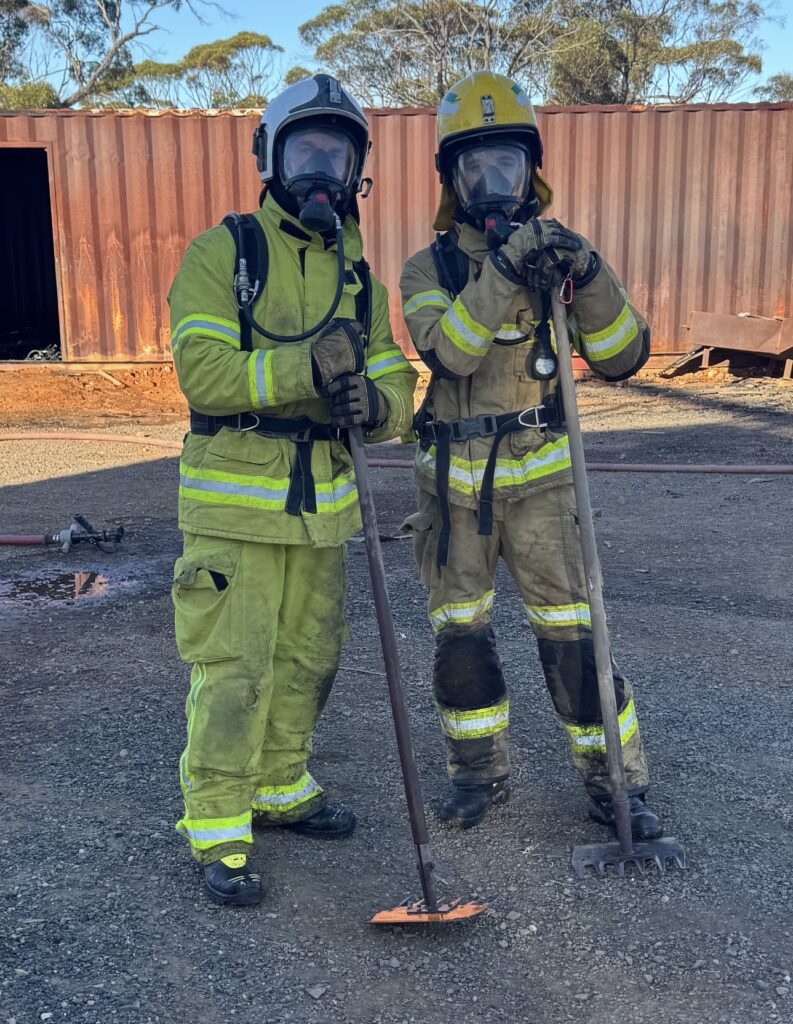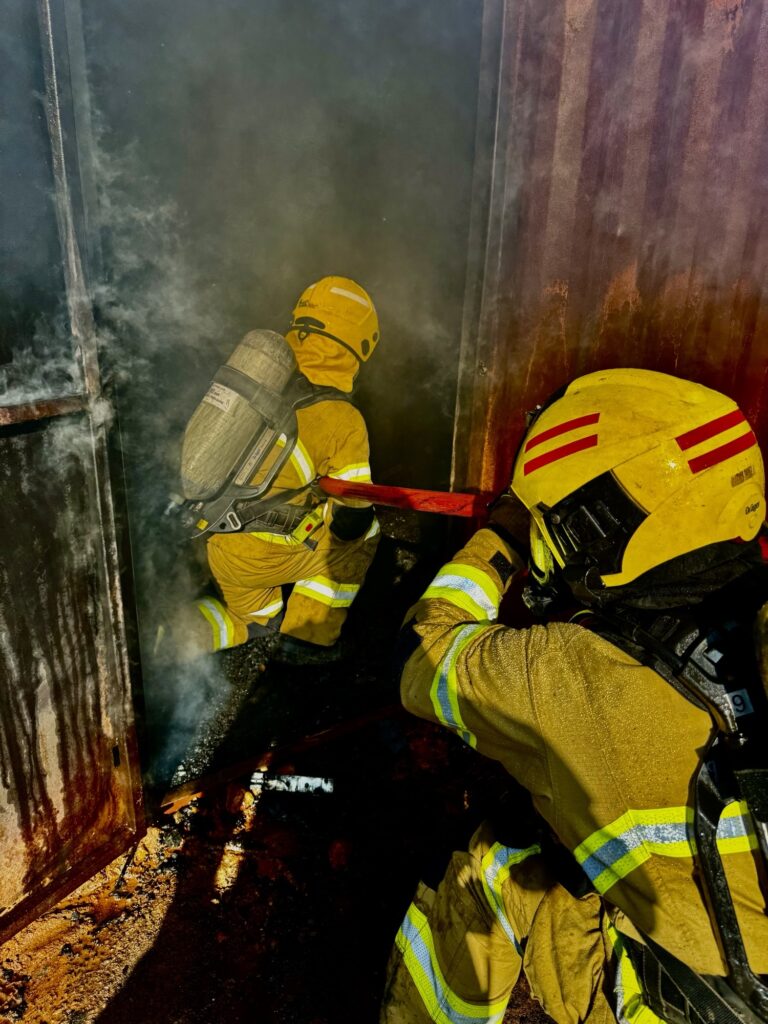
The Operate Breathing Apparatus (PUAFIR207) unit focuses on the safe use, management, and maintenance of breathing apparatus in operational and emergency contexts. Participants will gain the practical experience needed to conduct pre-operational checks, use breathing apparatus effectively, monitor air consumption, and complete post-operational procedures.
Age: Minimum of 18 years old
Physical Fitness: Ability to wear breathing apparatus and perform tasks under simulated operational conditions (e.g. confined spaces, reduced visibility, or heat exposure)
Language, Literacy and Numeracy (LLN): Sufficient English skills to interpret safety instructions, complete documentation, and communicate during operations
Unique Student Identifier (USI): A valid USI must be provided prior to course commencement
The PUAFIR207 – Operate Breathing Apparatus course is suitable for individuals who are required to use breathing apparatus in the workplace or during emergency operations.
This course is ideal for:
Fire and emergency service personnel
Industrial and mine rescue teams
Confined space workers and safety observers
Security, correctional, and emergency response officers
Hazardous materials (HAZMAT) handlers
Marine and aviation emergency staff
Manufacturing, construction, and utility workers operating in confined or contaminated areas
Suitable for:
Individuals working in or around environments where hazardous gases, smoke, or oxygen deficiency may occur
Organisations seeking to ensure staff are trained and compliant with WHS and emergency response requirements
Completing the PUAFIR207 – Operate Breathing Apparatus course provides participants with critical safety and professional competencies valued across multiple industries.
Key benefits include:
Improved Safety Awareness – Learn to protect yourself and others in oxygen-deficient or contaminated atmospheres.
National Recognition – Gain a Statement of Attainment recognised under the Australian Qualifications Framework (AQF).
Regulatory Compliance – Meet WHS, emergency response, and industry-specific safety requirements.
Practical Experience – Train with industry-standard equipment in realistic scenarios to build confidence and proficiency.
Career Progression – Enhance employability in roles that require emergency response or high-risk safety qualifications.
Emergency Readiness – Be prepared to respond effectively to incidents involving fire, gas leaks, or confined spaces.
Career pathways and roles where this unit is highly relevant include:
Firefighter (urban, rural, or industrial)
Emergency response team member
Mine rescue officer
Confined space entrant or standby person
Industrial maintenance or safety technician
Hazardous materials (HAZMAT) responder
Security or correctional services emergency officer
Marine, aviation, or transport emergency staff
Utility and infrastructure worker (gas, water, energy, telecommunications)
Industry sectors where this unit is commonly required:
Fire and emergency services
Mining and resources
Oil, gas, and petrochemical industries
Construction and engineering
Manufacturing and processing plants
Maritime and aviation sectors
Local government and utilities
Defence and security services
Upon competition of the course, students will be able to:
This course includes the following nationally recognised unit(s) of competency:
PUAFIR207 – Operate Breathing Apparatus is a standalone unit of competency within the PUA Public Safety Training Package.
It may be delivered individually or as part of a qualification or skill set, such as:
PUA20622 – Certificate II in Public Safety (Firefighting and Emergency Operations)
PUAFIR204 – Respond to Wildfire
PUAFIR210 – Prevent Injury
PUAFIR306 – Identify, Detect and Monitor Hazardous Materials at an Incident
Age: Minimum of 18 years old
Physical Fitness: Ability to wear breathing apparatus and perform tasks under simulated operational conditions (e.g. confined spaces, reduced visibility, or heat exposure)
Language, Literacy and Numeracy (LLN): Sufficient English skills to interpret safety instructions, complete documentation, and communicate during operations
Unique Student Identifier (USI): A valid USI must be provided prior to course commencement
An LLN assessment ensures you have the reading, writing, numeracy, and communication skills needed to successfully complete the course.
PUAFIR210 – Prevent Injury (included in the course)
MSMWHS216 – Operate Breathing Apparatus (Included in the course)
the Following methods will be used to assess competency for PUAFIR207 – Operate Breathing apparatus Open Circuit:
The PUAFIR207 – Operate Breathing Apparatus unit is a nationally recognised competency within the PUA Public Safety Training Package, accredited under the Australian Qualifications Framework (AQF).
Successful participants will receive a Statement of Attainment issued by an Australian Registered Training Organisation (RTO) upon demonstrating competency in all assessment requirements including:
All PPE and Training Materials will be provided on the day.
During training, Lunch and drinks will be provided at 12-1pm
the course is delivered over a 2 Day period including various opportunities to conduct realistic simulations and practice.
This course is delivered at a range of workplaces and training sites to provide realistic, industry-specific learning environments. See our locations below:
Experience dynamic learning at Forrestdale, Perth with great facilities in a great location
The cost of the PUAFIR207 – Operate Breathing Apparatus Open Circuit reflects the high level of industry expertise, resources, and workplace-based training provided. RMTS offers flexible payment options.
| Title | Fee |
| Full Fee1 | 795.00 |

Enrolling in our courses is now easier than ever, thanks to our online enrolment process. Simply click on the button below, and you’ll be taken to our online enrolment form, where you can provide all the necessary information and complete your enrolment in just a few easy steps. Our online enrolment process is convenient, secure, and available 24/7, ensuring that you can enrol at a time that suits you. Don’t let distance or time constraints hold you back from achieving your career goals. Enrol online today and take the next step in your professional journey.

If you have any questions related to the PUAFIR207 – Operate Breathing Apparatus please contact us here